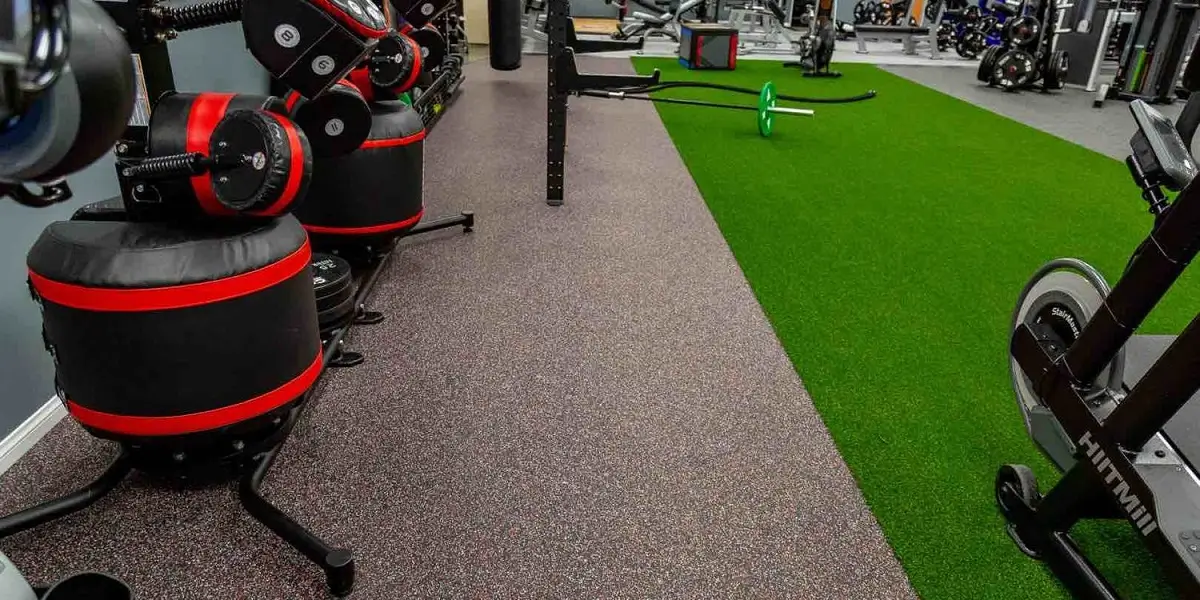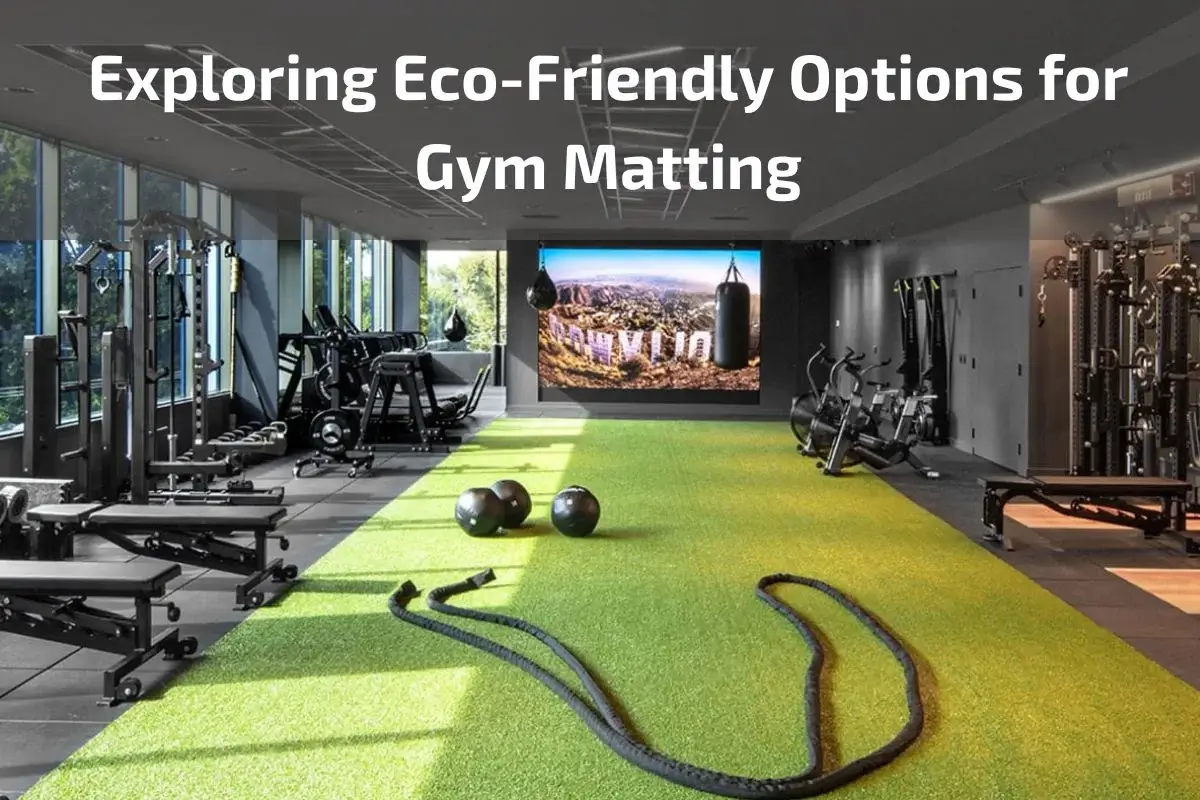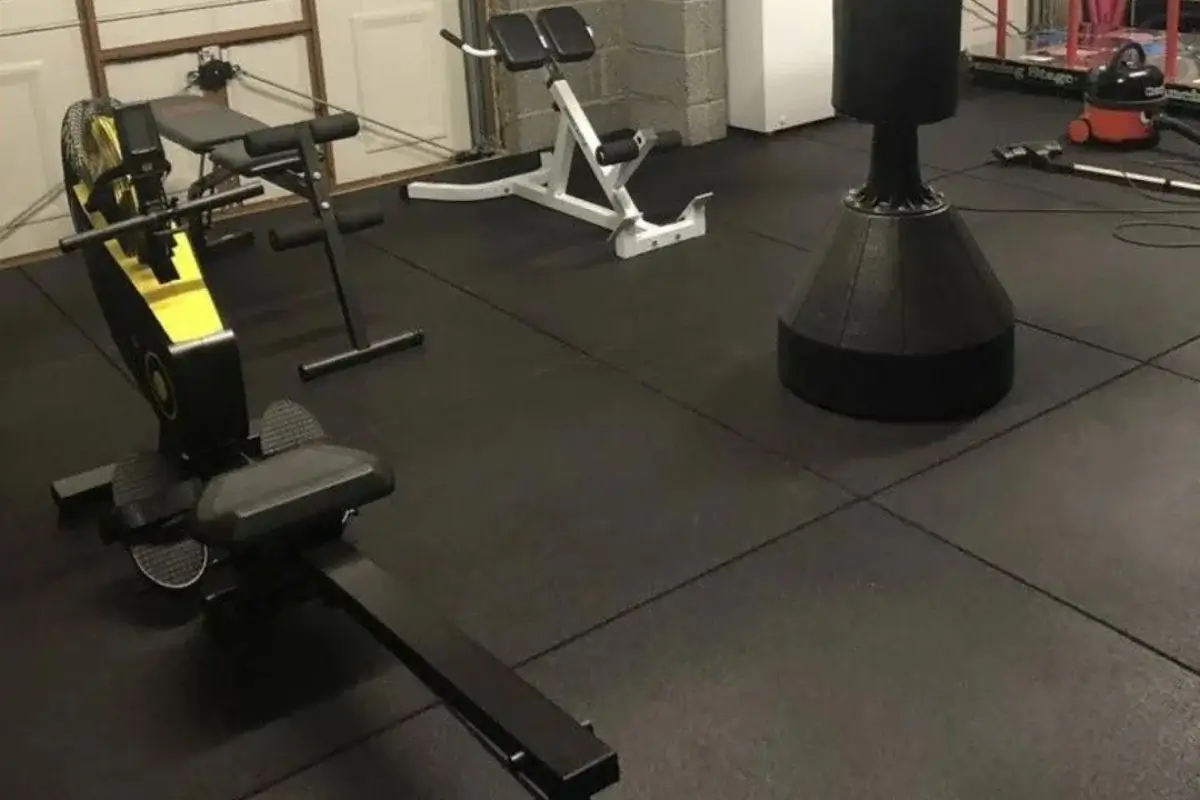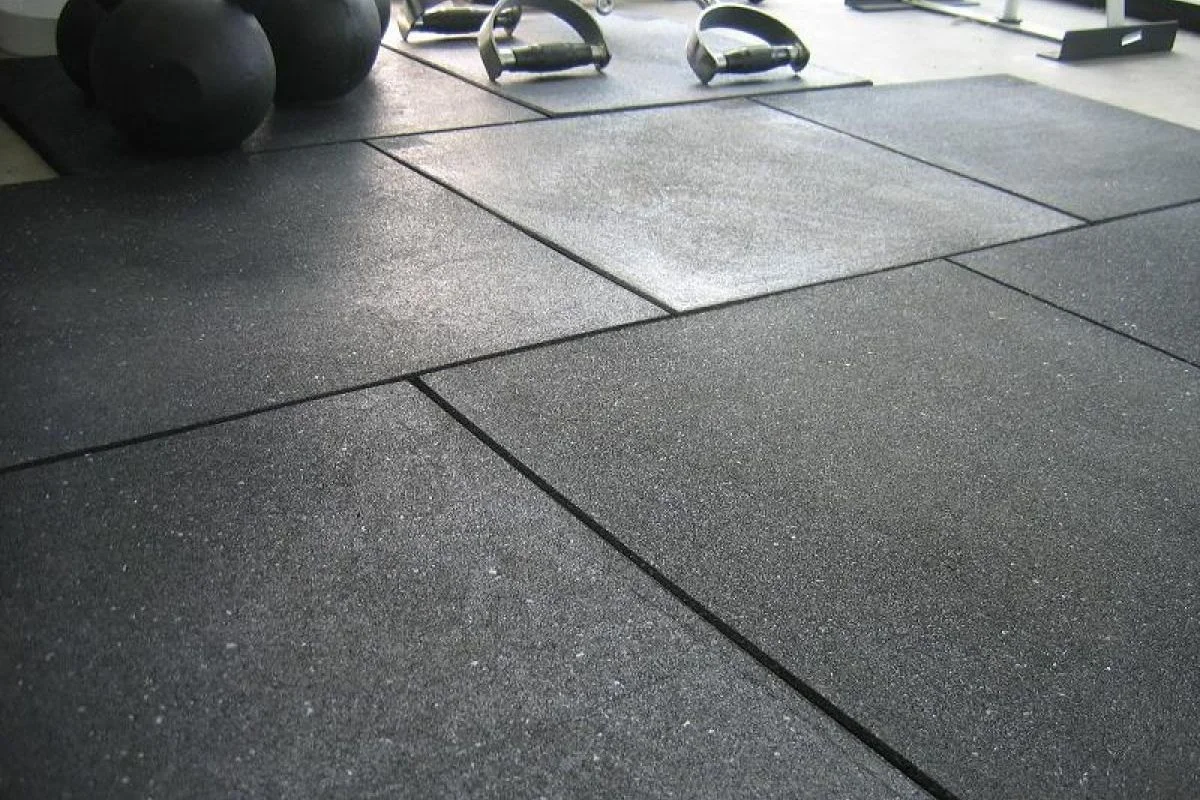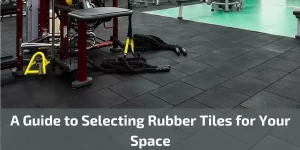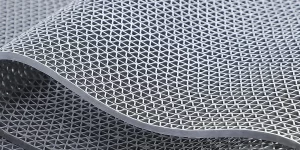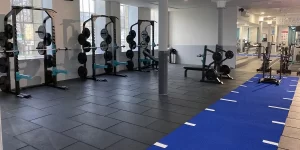In today’s world, the pursuit of sustainability is becoming increasingly important in all aspects of life, including fitness and exercise. As awareness grows about the environmental impact of our choices, individuals and businesses alike are seeking eco-friendly alternatives in every facet of their lifestyles. This includes the gym environment, where conscious consumers are looking for ways to reduce their carbon footprint while maintaining a commitment to health and wellness. In response to this demand, the fitness industry has seen a rise in the availability and popularity of eco-friendly gym matting options. In this article, we will delve into the world of eco-friendly gym matting, exploring the benefits, materials, and considerations associated with making environmentally conscious choices for your gym or workout space. Join us as we navigate the landscape of sustainable fitness solutions and discover how eco-friendly gym matting can contribute to a healthier planet and a healthier you.
Importance of Proper Gym Matting
Proper gym matting is an essential component of any fitness facility, whether it’s a commercial gym, a home workout space, or a studio. Its importance cannot be overstated, as it plays a crucial role in ensuring the safety, comfort, and effectiveness of exercise routines. Here are some key reasons why proper gym matting is essential:
- Safety First: One of the primary reasons for investing in quality gym matting is to enhance safety during workouts. Gym matting provides a cushioned surface that helps absorb impact and reduce the risk of injuries from falls or accidents. Whether performing high-intensity exercises, weightlifting, or yoga poses, a proper gym mat offers stability and support, minimizing the chance of slips, trips, or strains.
- Protects Flooring and Equipment: Gym matting acts as a protective layer for the underlying flooring and exercise equipment. Heavy weights and equipment can cause damage to floors over time, leading to costly repairs or replacements. By placing durable gym matting underneath, you create a barrier that absorbs shock and prevents scratches, dents, and other forms of wear and tear on surfaces.
- Enhances Performance: A stable and supportive surface is essential for maximizing workout performance. Proper gym matting provides a consistent and level platform for various exercises, allowing individuals to maintain proper form and technique without discomfort or instability. Whether performing cardio exercises, strength training, or flexibility routines, a suitable gym mat contributes to improved balance, agility, and overall workout efficiency.
- Promotes Hygiene and Cleanliness: Gym matting helps maintain a clean and hygienic workout environment by preventing sweat, dirt, and bacteria from accumulating on the floor surface. Easy-to-clean materials make it simple to wipe down and sanitize gym mats regularly, reducing the risk of microbial growth and odors. This not only promotes a more pleasant workout experience but also contributes to the overall health and wellness of gym users.
- Versatility and Adaptability: Gym matting is highly versatile and adaptable to a wide range of fitness activities and environments. Whether used in a commercial gym, home garage, or outdoor space, gym mats come in various sizes, thicknesses, and materials to suit different needs and preferences. From high-impact exercises to low-impact stretching routines, there’s a suitable gym matting solution available for every fitness regimen.
Definition and Purpose Gym Matting
Gym matting refers to specialized flooring designed to provide support, stability, and safety during exercise and fitness activities. It is commonly used in various fitness settings, including gyms, yoga studios, martial arts centers, and home workout spaces. Gym matting comes in a variety of materials, thicknesses, and configurations to accommodate different types of exercises and fitness routines.
The primary purpose of gym matting is to create a stable and cushioned surface that helps reduce the risk of injuries while enhancing comfort and performance during workouts. Unlike traditional flooring surfaces such as concrete or hardwood, gym matting offers several benefits that cater specifically to the demands of physical exercise:
- Shock Absorption: Gym matting is engineered to absorb impact and reduce the strain on joints, muscles, and bones during high-impact activities like jumping, running, and weightlifting. The cushioned surface helps minimize the risk of injuries such as sprains, strains, and stress fractures by providing a softer landing area.
- Non-Slip Surface: Many gym mats feature textured or non-slip surfaces that provide traction and stability, preventing slips, trips, and falls during exercise routines. This is especially important for activities that involve dynamic movements or transitions between different postures and positions.
- Comfort and Support: Gym matting offers a comfortable and supportive surface for individuals performing exercises that require prolonged periods of kneeling, lying down, or sitting. The cushioning effect helps alleviate pressure points and discomfort, allowing users to focus on their workouts without distractions or discomfort.
- Protection of Flooring and Equipment: Gym matting serves as a protective layer for underlying flooring surfaces and exercise equipment. It helps prevent damage from heavy weights, equipment vibrations, and foot traffic, preserving the integrity of the floor and extending the lifespan of fitness equipment.
- Hygiene and Cleanliness: Gym matting is designed to be easy to clean and maintain, helping to minimize the buildup of sweat, dirt, and bacteria. Regular cleaning and sanitization of gym mats contribute to a hygienic workout environment, reducing the risk of infections and promoting overall health and well-being.
Factors to Consider When Choosing Gym Matting
Type of Exercise and Activity:
- Identify the primary types of exercises and activities that will be performed on the gym matting.
- Consider the impact level and intensity of the exercises to determine the required thickness and density of the matting.
- Choose gym matting materials that offer appropriate support and cushioning for specific exercises, such as high-impact cardio, weightlifting, yoga, or martial arts.
Size and Dimensions of the Space:
- Measure the dimensions of the workout area to determine the size and quantity of gym matting needed.
- Consider any irregularities or obstacles in the space that may affect the layout and placement of the gym mats.
- Evaluate the availability of customizable options to accommodate unique space requirements or configurations.
Budget and Cost Considerations:
- Establish a budget for gym matting based on available funds and desired quality and features.
- Compare prices and features of different gym matting options to find the best value for money.
- Consider long-term durability and maintenance costs when evaluating the overall cost-effectiveness of gym matting solutions.
Environmental and Sustainability Factors:
- Research the environmental impact of various gym matting materials and manufacturing processes.
- Choose eco-friendly options made from sustainable materials or recycled content, if available.
- Consider end-of-life disposal options and recyclability of gym matting materials to minimize environmental impact.
Durability and Longevity:
- Assess the durability and resilience of gym matting materials to withstand heavy use and frequent cleaning.
- Look for gym matting products with reinforced edges, anti-tear properties, and resistance to punctures and abrasions.
- Read customer reviews and warranty information to gauge the expected lifespan and performance of gym matting options.
Safety and Compliance Standards:
- Ensure that gym matting products meet industry safety standards and regulations for slip resistance, fire retardancy, and toxicity levels.
- Check for certifications and compliance with relevant safety guidelines, such as ASTM International standards for impact attenuation and shock absorption.
- Consult with experts or professionals to ensure proper installation and adherence to safety protocols for gym matting in commercial or public fitness facilities.
Benefits of Choosing Eco-Friendly Gym Matting
- Environmental Conservation:
- Eco-friendly gym matting is made from sustainable materials, reducing the reliance on non-renewable resources and minimizing carbon footprint.
- By choosing gym matting made from recycled materials or natural resources, individuals and businesses contribute to the conservation of ecosystems and reduction of environmental degradation.
Health and Safety:
- Eco-friendly gym matting is often free from harmful chemicals and toxins commonly found in conventional materials, promoting healthier indoor air quality and reducing the risk of respiratory issues and allergies.
- Individuals with sensitivities or allergies to synthetic materials may benefit from using eco-friendly gym matting options, which are typically hypoallergenic and low in volatile organic compounds (VOCs).
Durability and Longevity:
- Despite being eco-friendly, gym matting made from sustainable materials is engineered to be durable and long-lasting, withstanding heavy use and regular cleaning without compromising performance or integrity.
- High-quality eco-friendly gym matting options are designed to resist wear and tear, offering comparable or superior durability to conventional synthetic materials.
Versatility and Adaptability:
- Eco-friendly gym matting comes in a variety of styles, colors, and thicknesses, providing versatility and adaptability to different fitness environments and workout preferences.
- From yoga studios to commercial gyms, eco-friendly gym matting solutions can be customized to meet specific space requirements and aesthetic preferences while maintaining sustainability principles.
Corporate Social Responsibility:
- Choosing eco-friendly gym matting reflects a commitment to corporate social responsibility and sustainable business practices, aligning with the values and expectations of environmentally conscious consumers and stakeholders.
- Businesses that prioritize sustainability in their purchasing decisions demonstrate leadership and accountability in addressing environmental challenges and promoting positive social impact within their communities.
Regulatory Compliance and Certification:
- Many eco-friendly gym matting products adhere to strict environmental standards and certifications, ensuring compliance with regulations and guidelines for sustainable manufacturing and production processes.
- By selecting certified eco-friendly gym matting options, individuals and businesses can have confidence in the product’s environmental credentials and commitment to responsible sourcing and production practices.
Maintenance and Care Tips for Gym Matting
Regular Cleaning and Sanitization:
- Develop a routine cleaning schedule to remove sweat, dirt, and bacteria from gym matting surfaces.
- Use a mild detergent or specialized gym mat cleaner diluted in water to effectively clean and disinfect the mats.
- Avoid using harsh chemicals or abrasive cleaners that may damage the gym matting materials or compromise their performance.
Gentle Scrubbing and Spot Cleaning:
- For stubborn stains or spills, gently scrub the affected area with a soft-bristled brush or cloth dampened with cleaning solution.
- Allow the cleaning solution to penetrate the stain before wiping it away with a clean, damp cloth.
- Avoid excessive scrubbing or rubbing, as it may cause damage to the surface of the gym matting.
Drying and Air Circulation:
- After cleaning, thoroughly rinse the gym matting with clean water to remove any residual cleaning solution or debris.
- Allow the gym matting to air dry completely in a well-ventilated area, ensuring adequate air circulation to prevent moisture buildup and mold growth.
- Avoid folding or stacking damp gym mats, as it may trap moisture and promote bacterial growth.
Inspection for Wear and Tear:
- Regularly inspect gym matting for signs of wear, tear, or damage, such as fraying edges, punctures, or surface cracks.
- Address any damage or deterioration promptly to prevent further degradation and maintain the integrity of the gym matting.
- Consider rotating or flipping gym mats periodically to distribute wear evenly and extend their lifespan.
Storage and Maintenance Practices:
- Store gym matting in a clean, dry area away from direct sunlight, moisture, and extreme temperatures.
- Avoid placing heavy objects on top of gym mats during storage, as it may cause deformation or permanent damage.
- Roll or fold gym mats carefully to prevent creases or wrinkles, using designated storage racks or containers to organize and protect them when not in use.
Professional Maintenance and Repair:
- Consult with professional cleaners or maintenance technicians for specialized cleaning and repair services, especially for large or commercial gym facilities.
- Follow manufacturer recommendations and guidelines for maintenance procedures and product warranties to ensure optimal performance and longevity of gym matting.
- Consider investing in preventative maintenance programs or service contracts to address routine upkeep and prolong the lifespan of gym matting investments.
Conclusion:
In conclusion, gym matting is an integral component of any fitness facility or workout space, playing a crucial role in promoting safety, comfort, and performance during exercise and physical activity. From providing cushioning and support to protecting flooring and equipment, gym matting offers numerous benefits that enhance the overall workout experience for individuals of all fitness levels.

